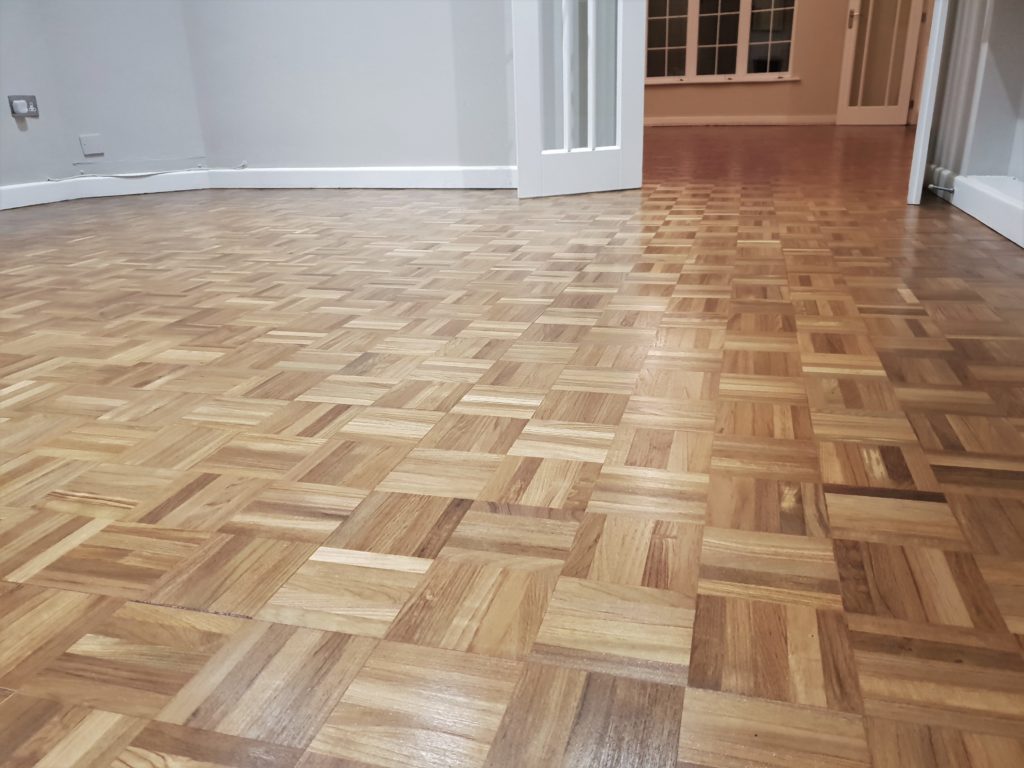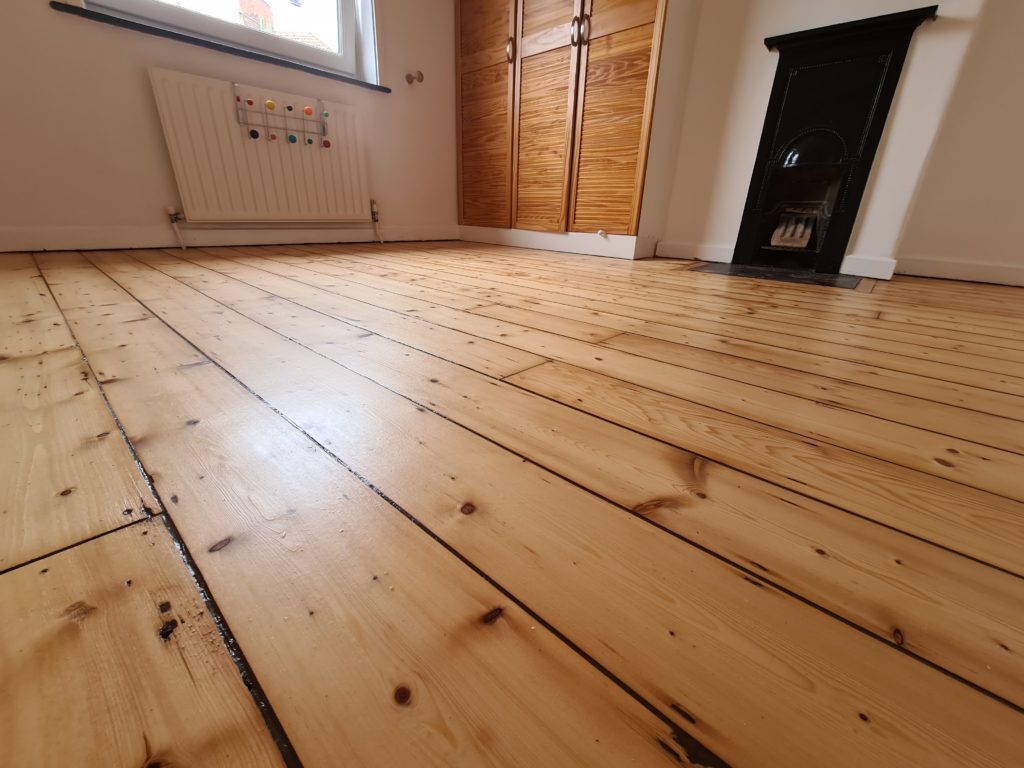Resin Gap Filling
The first method we use is Resin Gap Filling. This uses fine sawdust from the actual floor, which is then mixed with epoxy resin to create a filler that will match your floor in colour. Once our filler has the correct consistency, we spread over the entire surface. This will fill in all the gaps between boards and blocks, along with any other cracks and blemishes. Resin filling does improve insulation however it’s not without flaws. With dramatic changes in temperature and the natural movement of wood, resin filler can crack and fall through over time when used on floorboards.


Pine Slivers
Another method is reclaimed Pine Slivers. The Slivers are a pre-cut wedge, ranging from 6 and 8mm thick. In our experience, they are cosmetically and aesthetically are pleasing on the eye however, over time the floorboards can work lose and/or move with expansion through seasonal movement, which in turn can cause the Slivers to pop up. When this happens, it’s virtually impossible to rectify without sanding and/or replacing the Slivers in order to maintain a flush finish.
Additionally we’ve also noticed over the years, the ”reclaimed slivers” seem to be getting paler and paler and odd as this may sound -they no longer smell the same when cut or sanded anymore. Leading me to think that much of those currently being sold aren’t truly made from Antique Pine.
Our Take: Given how costly Slivers are to buy and install, plus the fact their not very future proof; as they can’t easily be patch repaired, we no longer offer this as a service.
Acrylic Mastic Filler
Last but certainly not least for gap filling is acrylic mastic. Acrylic is flexible, meaning it will expand and retract with the boards during the seasons and wont shrink or crack with climate changes, Although not the cheapest gap filling method, we certainly believe its the best for Floorboards and our first choice.


